Superfact 13: The Strange Worlds of Exoplanets
Our sun is a star, and it has 8 planets Mercury, Venus, Earth, Mars, Jupiter, Saturn, Uranus, and Neptune (as well as comets, asteroids, dwarf planets, etc.). The stars you see when you look up in the sky also have planets. We have identified 5,765 exoplanets (as of July 24th, 2024) but there are billions more in our galaxy. Some exoplanets are similar to Earth, and some are very different from any of the planets in our solar system.
Exoplanets
We know that exoplanets exist, we know some of them are in the so-called habitable zone and that some of them are very strange and interesting. This is certainly important knowledge for how we view our world and the Universe and yet many people who have not paid attention to astronomy news are very surprised to hear this information.
I’ve met many people who aren’t sure about the difference between a planet and a star, so being confronted with the news about exoplanets can be dizzying. That is why I am referring to the Strange Worlds of Exo Planets as a super-fact.
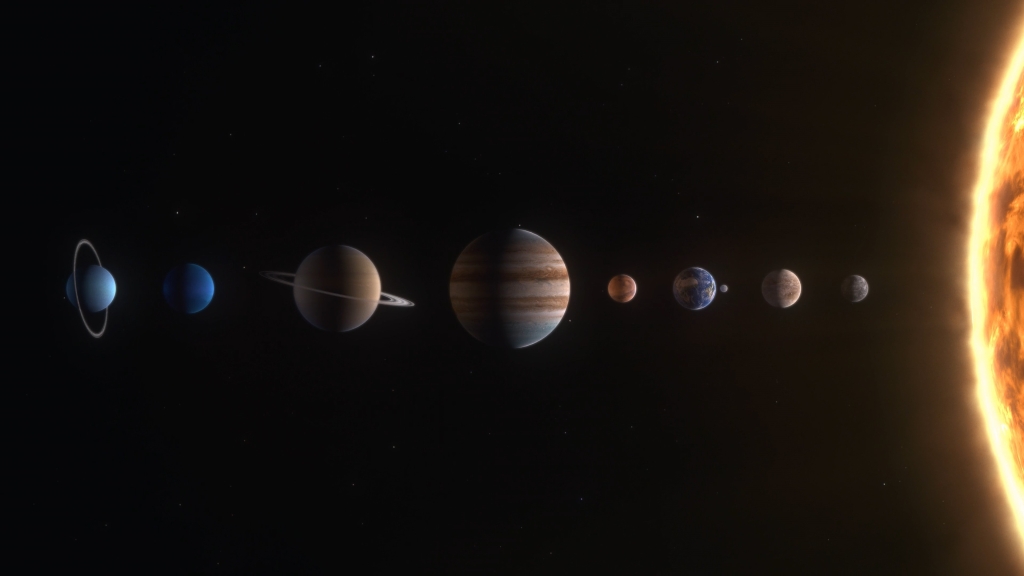
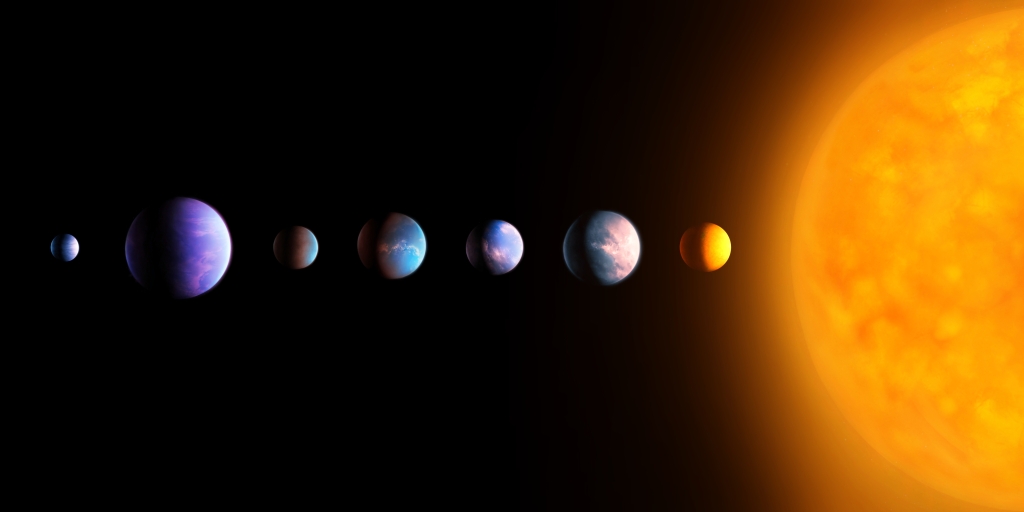
Most known exoplanets orbit stars roughly similar to the Sun but a lot of exoplanets have been seen orbiting red dwarf stars. It is estimated that there are 11 billion potentially habitable Earth-sized planets in the Milky Way. 40 billion if planets orbiting the numerous red dwarfs are included.
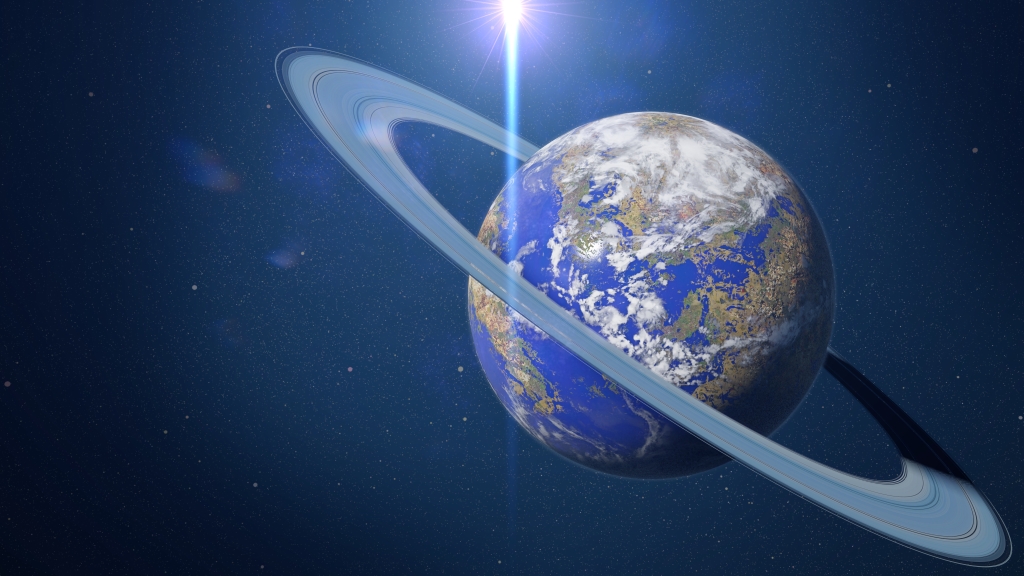
Habitable Zones
About 1 in 5 Sun-like stars have an “Earth-sized planet in the habitable zone. The definition of “habitable zone” is the distance from a star at which liquid water could exist on orbiting planets’ surfaces. Habitable zones<<Link-2>> are also known as Goldilocks’ zones, where conditions might be just right – neither too hot nor too cold – for life. The habitable zone for our solar system goes from the orbit of Venus to orbit of Mars with Earth in the middle.
It may seem strange that Venus is borderline in the habitable zone considering it’s hellish 870 degrees Fahrenheit. However, being in the habitable zone is no guarantee that the planet is habitable, and Venus got unlucky with its greenhouse gases (beginning about 2 billion years ago). Below you can watch a NASA video explaining about habitable zones.
Planets are extremely faint compared to their parent stars. For example, a Sun-like star is about billion times brighter than the reflected light from any exoplanet orbiting it. It is difficult to detect such a faint light source, and furthermore, the parent star causes a glare that tends to wash it out.
Just think about why you don’t see many stars during the day. They are still there and why you can’t see them is not because the sky is blue, but because the sun’s powerful light washes them out. Therefore, it is necessary to block the light from the parent star to reduce the glare while leaving the light from the planet detectable; doing so is a major technical challenge. All exoplanets that have been directly imaged are both large (more massive than Jupiter) and widely separated from their parent stars.
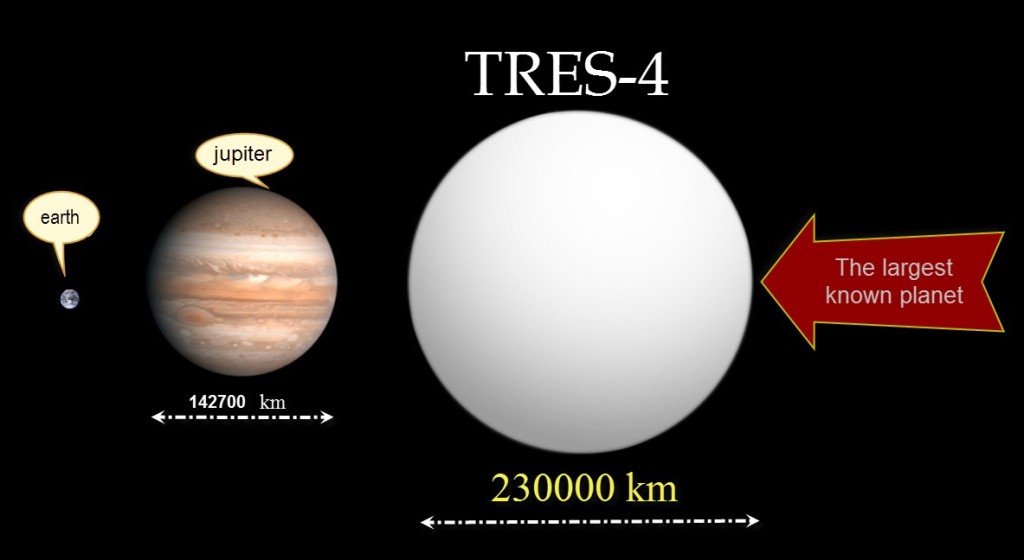
The vast majority have been detected through indirect methods, such as the transit method. It should be noted that the official definition of the term planet used by the International Astronomical Union (IAU) (since they booted Pluto) only covers our Solar System and thus does not apply to exoplanets. My opinion : we may need another update on the definition of what a planet is as we continue making exoplanet discoveries.
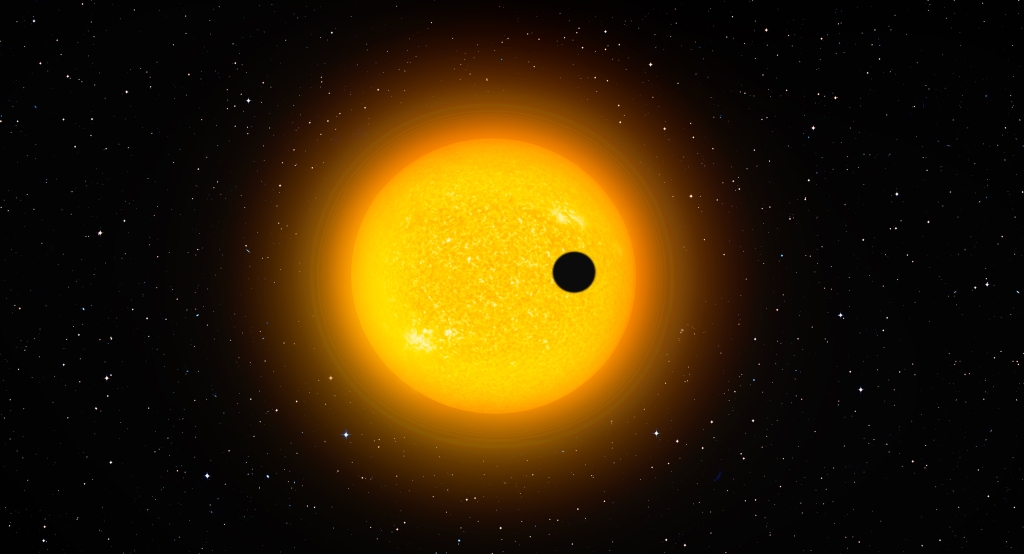

Exoplanets Are Very Strange
Many of the exoplanets are very strange. Gliese 581 is about 20 light-years away from Earth and is very similar to earth, but it doesn’t rotate. The orbit of WASP-17b is the opposite of the rotation of its star (unlike our planets, and most exoplanets). Its radius is 1.9 times larger than Jupiter’s radius. In other words, its volume is 6.86 times larger than Jupiter’s and yet its mass is only half the mass of Jupiter making it a big light puff ball. Like giant cotton candy.
Gliese 436b, this planet has a core made up of ice (yes ice formed from water) that is as hot as fire. TrES-2b or Kepler-1b reflects less than 1% of the light it receives. It is darker than coal. 55 Cancri-e is believed to have an interior of diamond. In addition, the side facing its star/sun is extremely hot (1,700°C or 3,100°F).
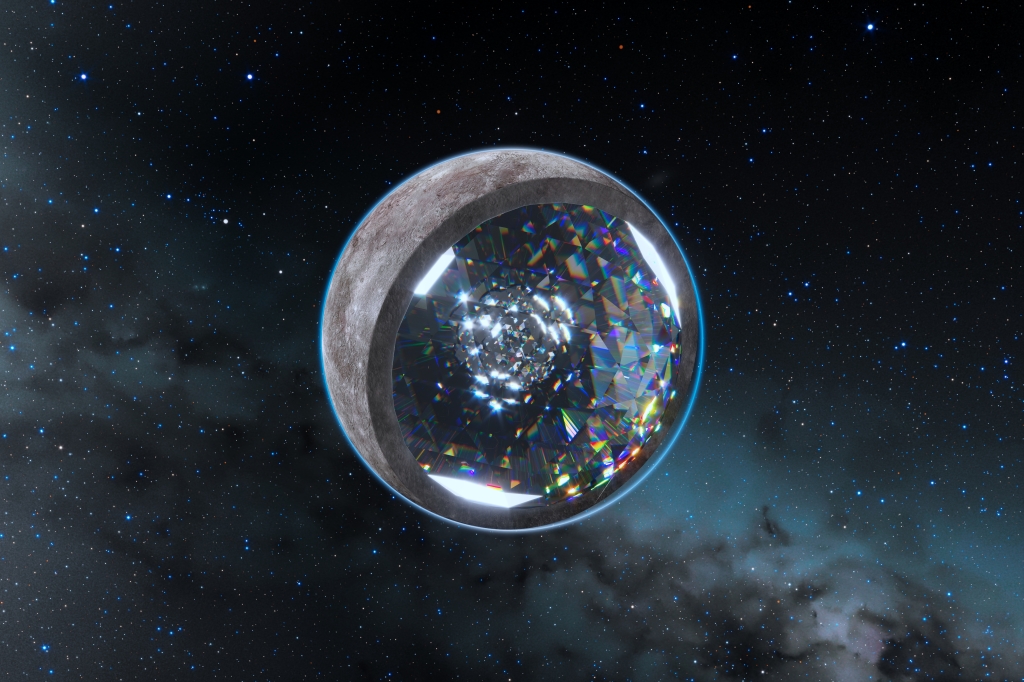
Then we also have J1407b, an exoplanet six times as massive as Jupiter and 20 times as massive as Saturn but with a ring system that outshines that of Saturn by far. J1407b is often referred to as Super Saturn.
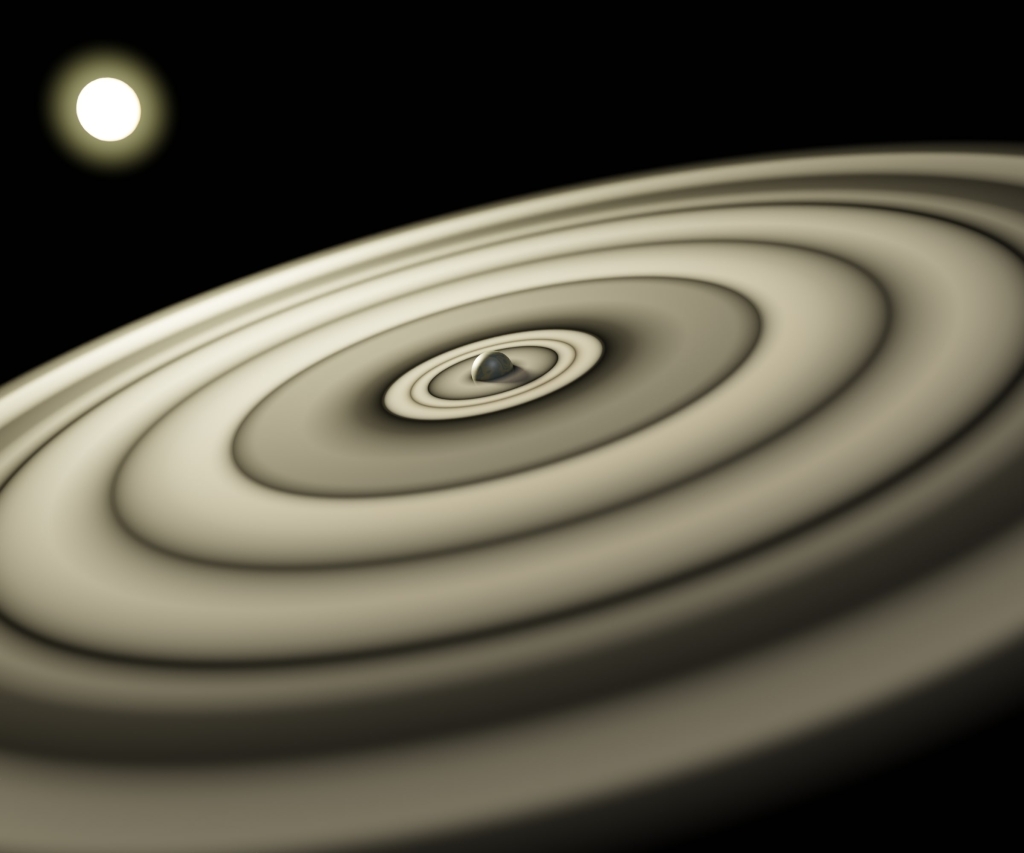
Determining what materials exoplanets consist of is very difficult but NASA believe they’ve found water planets. Check out this video from NASA and the illustration below.
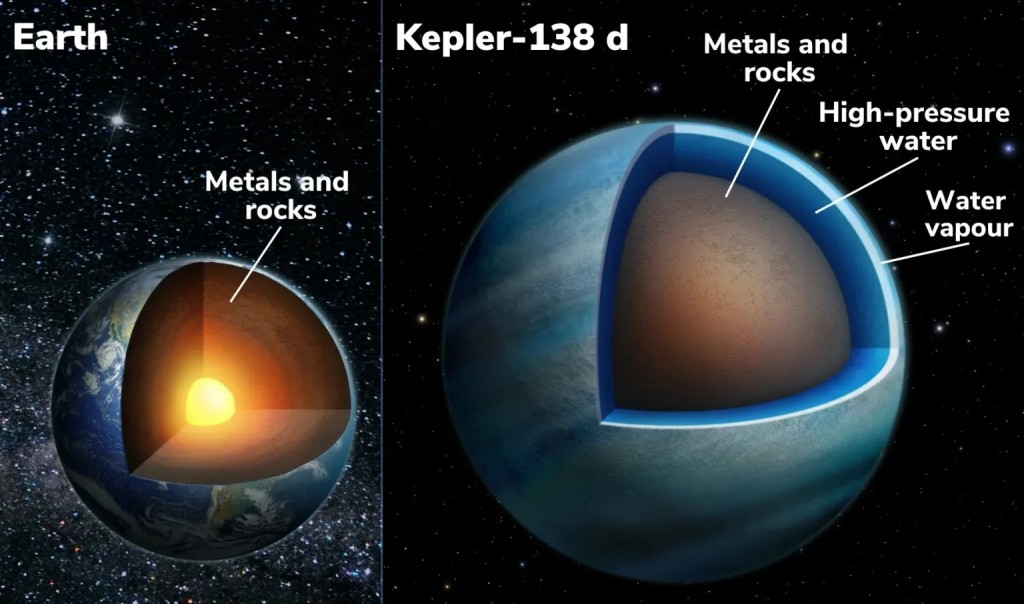
NASA also believe they have found water vapor in a small exoplanet’s atmosphere, GJ 9827d. Check out the video below.
Below is an imagined exoplanet with mushroom like life
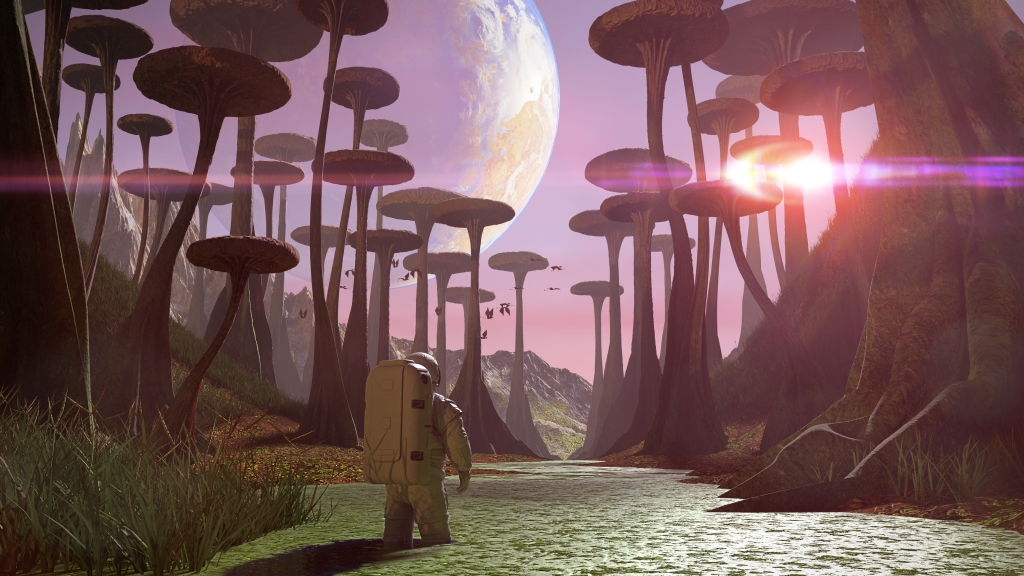
So, it is estimated that there are 11 billion potentially habitable Earth-sized planets orbiting stars roughly the same size as the sun in the Milky Way. It is estimated that there are an additional 40 billion potentially habitable Earth-sized planets orbiting red dwarf stars in the Milky Way.
The NEID Spectrometer
As you can see in the comment section below, a fellow blogger and on-line friend David Lee Summers mentioned that looking at exoplanets is his “day” job! He spent the last three nights helping to take spectra of exoplanet systems with the WIYN telescope at Kitt Peak. They work with the NASA-funded NEID spectrometer.
A spectrometer is a scientific instrument that measures the distribution of light wavelengths, or the spectral components of a physical phenomenon It is amazing what you can find out from star light, the weight of exoplanets, the size of stars, the elements and substances in stars and planets. Below is the extreme-precision radial-velocity spectrograph mounted on the WIYN 3.5-meter Telescope at Kitt Peak National Observatory. That is the instrument David works with.
David wrote a blog post about his work which I will re-blog in the near future.
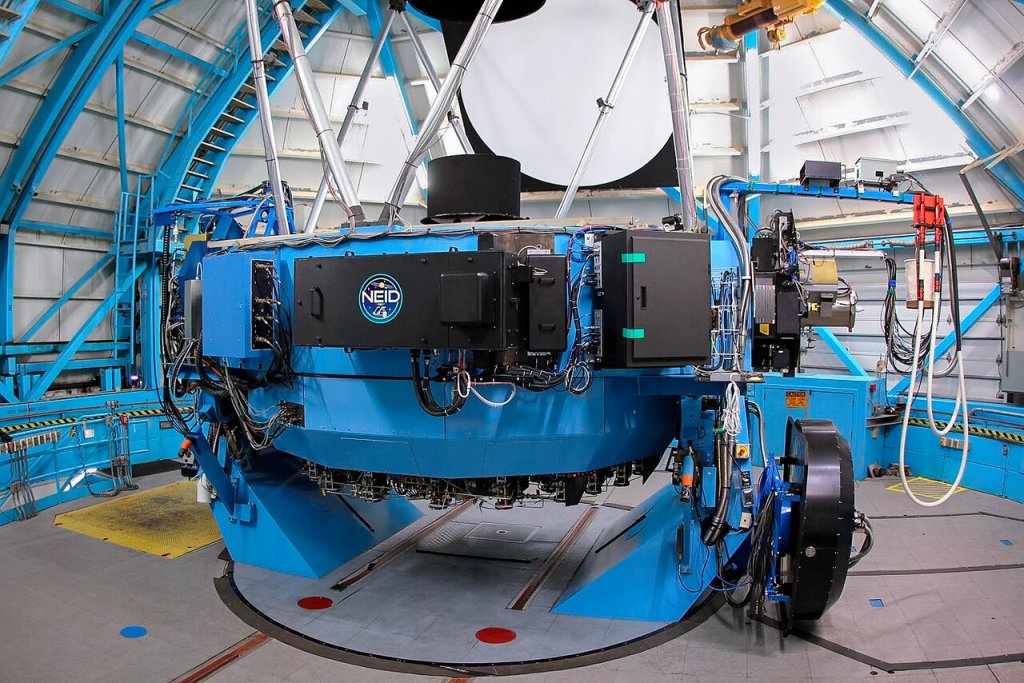
Thank you so much David.
Do you believe there’s intelligent life on any of them? If you do, why haven’t we heard from them?

